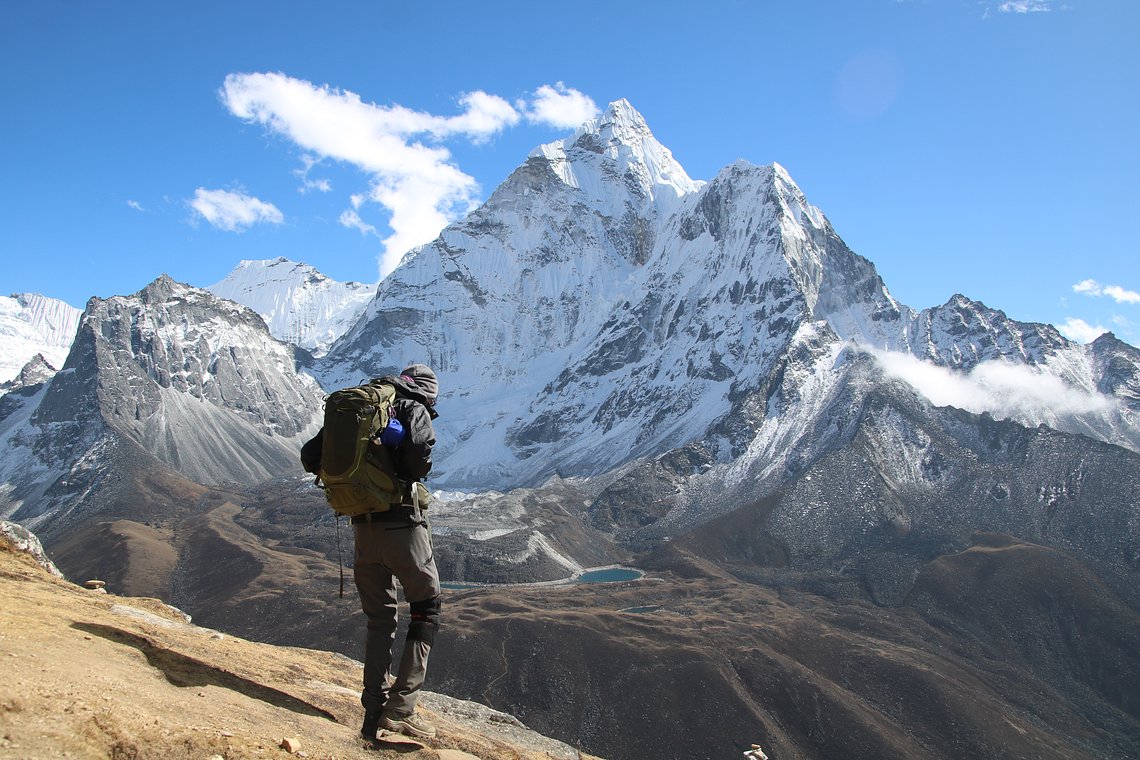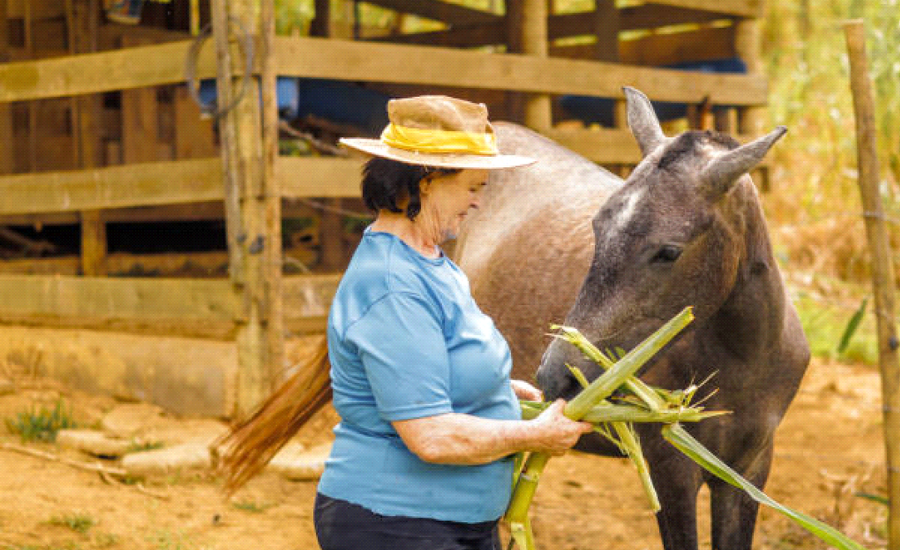Everest Base Camp, often referred to as the gateway to the world’s highest peak, offers trekkers an experience filled with stunning vistas, rich cultural encounters, and significant personal achievement. The journey to this iconic destination is as much about the journey itself as it is about reaching the base camp.
One of the most compelling highlights of the trek is the dramatic flight from Kathmandu to Lukla. Known for its exhilarating descent onto one of the world’s most challenging runways, this flight sets the tone for the adventure ahead. From Lukla, trekkers embark on a path that leads through picturesque villages, dense forests, and across suspension bridges, each segment offering its own unique beauty and challenges.
A key highlight is Namche Bazaar, a bustling Sherpa town that serves as a vital acclimatization and cultural hub. This vibrant settlement is nestled within a valley and provides breathtaking panoramic views of the surrounding peaks, including Everest, Lhotse, and Ama Dablam. Namche Bazaar also offers insight into Sherpa culture, with its traditional markets, monasteries, and local cuisine, enriching the trekking experience.
The trek’s progression through the Khumbu region introduces trekkers to a series of awe-inspiring landscapes. Tengboche, renowned for its monastery, offers serene moments and spectacular views of Everest and its neighboring peaks. The path to Dingboche and Lobuche features increasingly rugged terrain and dramatic high-altitude landscapes, including expansive glacial moraines and stark, windswept ridges.
Reaching Gorak Shep, the last settlement before Everest Base Camp, is another significant milestone. From here, trekkers embark on the challenging ascent to Kala Patthar, renowned for providing some of the best panoramic views of Mount Everest. The sunrise over Everest from Kala Patthar is a highlight that etches itself into the memory of every trekker, as the first light casts a golden glow on the towering peak.
Finally, arriving at Everest Base Camp itself is the culmination of the trek. Standing at 5,364 meters (17,598 feet), base camp provides a striking view of the Khumbu Icefall and the immense, towering ice formations that are a prelude to the mountain’s summit. The sense of accomplishment at reaching this iconic location, combined with the proximity to Everest, offers a profound and exhilarating conclusion to the trek.
Throughout the journey, the opportunity to interact with local Sherpa people, witness traditional festivals, and experience the unique high-altitude environment adds layers of richness to the adventure. Each step along the way reveals new facets of the majestic Everest region, making the trek to Everest Base Camp a truly unforgettable experience.
Introduction to Everest Base Camp
Everest Base Camp, perched at an elevation of 5,364 meters (17,598 feet) on the southern flank of Mount Everest, is a renowned destination for trekkers seeking an awe-inspiring adventure. This iconic trek begins with a thrilling flight from Kathmandu to Lukla, landing at one of the world’s most precarious airports. From Lukla, the trek traverses the Khumbu region, leading through vibrant Sherpa villages, lush forests, and dramatic mountainous terrain. The journey to Everest Base Camp typically spans 12 to 14 days, covering approximately 130 kilometers (80 miles) round-trip. The trek offers an unparalleled opportunity to experience the grandeur of the Himalayas, immerse in Sherpa culture, and test one’s endurance against high-altitude challenges. The trek is not only a physical feat but also a profound journey of personal achievement, filled with moments of breathtaking beauty and cultural enrichment. The trek’s allure lies in its combination of natural splendor and the unique experience of standing at the foot of the world’s highest peak.
Key Highlights of the Trek
The Everest Base Camp trek is marked by several key highlights that contribute to its legendary status. One of the most exhilarating experiences is the flight from Kathmandu to Lukla, renowned for its dramatic approach and spectacular views of the Himalayas. Namche Bazaar, a bustling Sherpa town, serves as a crucial acclimatization stop and cultural hub, offering stunning views of Everest and a glimpse into local life. Tengboche Monastery, with its serene atmosphere and panoramic mountain views, provides spiritual and visual enrichment. The challenging ascent to Kala Patthar rewards trekkers with breathtaking sunrise vistas of Everest, Lhotse, and the surrounding peaks. Finally, reaching Everest Base Camp itself, situated amidst the Khumbu Icefall, represents the culmination of the trek, offering an unparalleled sense of accomplishment and awe at the foot of the world’s tallest mountain.
Scenic Viewpoints and Landscapes
The trek to Everest Base Camp is renowned for its diverse and stunning landscapes. The journey begins with lush, green forests and terraced fields, transitioning to the dramatic, high-altitude terrain of the Khumbu region. Namche Bazaar offers panoramic views of Everest, Lhotse, and Ama Dablam, while Tengboche provides a sweeping vista of the Himalayas against the backdrop of the monastery. As trekkers ascend, the landscape becomes increasingly rugged and barren, with striking glacial moraines and stark, windswept ridges. The trek to Kala Patthar is particularly noteworthy for its spectacular sunrise views of Mount Everest and its neighboring peaks, where the first light illuminates the snow-covered summits in a golden glow. The final approach to Everest Base Camp showcases the Khumbu Icefall and immense ice formations, adding to the trek’s dramatic and awe-inspiring scenery.
Cultural Landmarks Along the Trail
The Everest Base Camp trek offers a rich tapestry of cultural landmarks that enhance the overall experience. Namche Bazaar, often referred to as the gateway to the Himalayas, is a vibrant Sherpa town with bustling markets, traditional architecture, and the Sherpa Museum. Tengboche Monastery, an important spiritual site, provides insight into Tibetan Buddhism and offers breathtaking views of Everest and the surrounding peaks. The trek also passes through several traditional Sherpa villages, such as Dingboche and Lobuche, where trekkers can observe daily life and cultural practices. Ancient mani walls and stupas scattered along the trail reflect the region’s Buddhist heritage. Interactions with local Sherpas and participation in local customs, such as greeting with a respectful “Namaste” and observing traditional festivals, further enrich the cultural experience of the trek.
Wildlife Encounters
The Everest Base Camp trek provides opportunities to encounter unique wildlife adapted to the high-altitude environment. As trekkers move through the lower altitudes, they may spot various species such as the Himalayan tahr, a wild goat with impressive curved horns, and the langur monkey, known for its long tail and agility. In the forested areas around Namche Bazaar and Phakding, sightings of the red panda and Himalayan pika are possible, though they can be elusive. As the trek ascends to higher altitudes, wildlife becomes less common, but trekkers might still encounter the snow leopard’s tracks, indicating its presence in the region. Bird enthusiasts can enjoy sightings of the colorful Himalayan griffon and the striking impeyan pheasant, also known as the Himalayan monal. These wildlife encounters add an extra layer of fascination to the trek, highlighting the diverse and resilient fauna of the Everest region.
Historical Significance of the Region
The Everest Base Camp trek traverses a region steeped in historical significance, intertwining natural grandeur with rich cultural heritage. Mount Everest, known as Sagarmatha in Nepali and Chomolungma in Tibetan, has long been a focal point of exploration and mountaineering. Its first successful ascent by Sir Edmund Hillary and Tenzing Norgay in 1953 marked a monumental achievement in the history of climbing, bringing global attention to the region. The surrounding Khumbu Valley, home to the Sherpa people, has been integral to this narrative, serving as a gateway for climbers and trekkers alike. The Sherpas, renowned for their mountaineering skills and high-altitude resilience, have played a crucial role in facilitating expeditions. The historic importance of the area is also reflected in the numerous expeditions that have passed through, each contributing to the lore and legacy of Everest. The trek allows visitors to connect with this rich history, from the ancient trade routes to the modern climbing expeditions that have defined the Everest region as a global icon of adventure.
Notable Villages and Local Communities
The Short Everest Base Camp trek passes through several notable villages and local communities, each offering unique insights into Sherpa culture and Himalayan life. Lukla, the starting point of the trek, is a bustling hub known for its airport and vibrant atmosphere. Namche Bazaar, often referred to as the “Gateway to Everest,” is a key acclimatization stop with its vibrant market, traditional Tibetan architecture, and the Sherpa Museum. Tengboche, home to the famous Tengboche Monastery, provides a serene setting with panoramic views of Everest and is a center for Buddhist spiritual life. Dingboche and Lobuche are smaller villages that serve as essential acclimatization points, providing trekkers with a glimpse into the simpler, high-altitude lifestyle of the Sherpa people. Each village along the route offers a unique blend of traditional customs, hospitality, and local flavor, enriching the trekking experience and fostering a deeper connection with the region’s cultural tapestry.
Unique Experiences on the Trek
The Everest Base Camp trek offers a range of unique experiences that go beyond the physical challenge of reaching the base camp. One of the most distinctive aspects is the opportunity to witness sunrise from Kala Patthar, where trekkers are treated to a breathtaking panorama of Everest and the surrounding peaks bathed in the first light of day. The trek also provides a rare glimpse into the traditional lifestyle of the Sherpa people, with opportunities to visit ancient monasteries and interact with local communities. Trekking through the Khumbu Icefall, a dynamic and ever-changing glacier landscape, is another extraordinary experience, offering a dramatic contrast to the lush forests and terraced fields encountered earlier in the trek. Additionally, the journey through diverse landscapes—from verdant valleys to stark, high-altitude deserts—allows trekkers to experience the full range of the Himalayas’ natural beauty and geological features.
Photography Opportunities
The Everest Base Camp trek is a photographer’s paradise, offering countless opportunities to capture the stunning beauty of the Himalayas and the unique cultural elements of the region. Key photography spots include the vibrant markets and traditional architecture of Namche Bazaar, the serene Tengboche Monastery with its backdrop of towering peaks, and the dramatic landscapes of the Khumbu Icefall. The ascent to Kala Patthar provides one of the trek’s most iconic photo opportunities, with panoramic views of Mount Everest and its neighboring peaks during sunrise or sunset. The trek also offers ample chances to photograph the diverse flora and fauna, such as the Himalayan tahr and colorful pheasants. Capturing the daily life of the Sherpa people, from their traditional homes to their engaging cultural practices, adds a rich narrative to the photographic record of the trek. Each segment of the journey presents its own visual treasures, making the Everest Base Camp trek a memorable experience for any avid photographer.
Adventure Activities Nearby
Beyond the Everest Base Camp trek itself, the surrounding region offers a range of adventure activities that cater to thrill-seekers and outdoor enthusiasts. For those interested in mountaineering, the area around Everest Base Camp is a hub for climbers preparing for summit attempts on Everest or other nearby peaks. The nearby town of Namche Bazaar also serves as a base for various trekking and climbing excursions, including the challenging ascent of Island Peak or Mera Peak. For those seeking less strenuous activities, options such as helicopter tours provide stunning aerial views of Everest and the surrounding Himalayan ranges. In addition, cultural experiences such as participating in local festivals or attending traditional Sherpa ceremonies offer a deeper connection to the region’s heritage. Adventure seekers can also explore the nearby Khumbu Glacier, an impressive and dynamic ice field that offers both visual splendor and unique exploration opportunities. Each of these activities enhances the overall adventure experience in this extraordinary part of the world.
Acclimatization Experiences
Acclimatization is a critical component of the Everest Base Camp trek, essential for ensuring a safe and enjoyable journey in the high-altitude environment. As trekkers ascend, the lower oxygen levels pose significant challenges, making gradual acclimatization crucial. The trek’s itinerary is designed to include acclimatization days, such as those spent in Namche Bazaar and Dingboche, which help the body adjust to the decreasing oxygen levels. During these periods, trekkers often engage in short, moderate hikes to higher elevations before returning to sleep at lower altitudes, a strategy known as “climb high, sleep low.” This approach minimizes the risk of altitude sickness and allows the body to produce more red blood cells to better cope with the thin air. Many trekkers find that symptoms like headaches, fatigue, and shortness of breath initially occur but improve as they continue to acclimate. Personal experiences vary, with some individuals feeling the effects more acutely, while others adapt more quickly. Embracing these acclimatization processes is key to successfully reaching Everest Base Camp and fully enjoying the trek’s other highlights.
Trekking Challenges and Resolutions
The trek to Everest Base Camp presents several challenges that test trekkers’ endurance, resilience, and adaptability. One of the primary difficulties is coping with the high altitude, which can lead to altitude sickness if not managed properly. To address this, trekkers must follow a gradual ascent plan and recognize symptoms early, adjusting their pace and itinerary as needed. Weather conditions in the Himalayas can also be unpredictable, with sudden changes in temperature and visibility posing additional obstacles. Adequate preparation, including proper gear and weather forecasting, helps mitigate these risks. The rugged terrain, with steep ascents and descents, requires physical fitness and mental determination. Trekking poles can provide stability and reduce strain on the knees. Additionally, the trek’s remote nature means that medical facilities are limited, so carrying a comprehensive first-aid kit and having knowledge of basic first aid is essential. By planning carefully and being prepared for these challenges, trekkers can overcome difficulties and achieve their goal of reaching Everest Base Camp.
Environmental Features and Conservation
The Everest Base Camp trek showcases a range of environmental features, from lush forests in the lower altitudes to stark, glacial landscapes near the base camp. The diverse ecosystems encountered along the trek include rhododendron forests, alpine meadows, and glacial moraines, each contributing to the region’s ecological richness. Preserving this environment is crucial due to the increasing number of trekkers and the impact of climate change. Environmental conservation practices are essential to protect the fragile ecosystems and maintain the beauty of the Himalayas. Trekking agencies and local organizations advocate for waste management, urging trekkers to carry out all non-biodegradable waste and use designated disposal facilities. Efforts to minimize deforestation, reduce plastic usage, and support sustainable tourism practices are also critical. By respecting these environmental guidelines and participating in conservation initiatives, trekkers contribute to the preservation of the Everest region for future generations.
Personal Narratives and Testimonials
Personal narratives and testimonials from those who have trekked to Everest Base Camp provide valuable insights and inspiration. Many trekkers describe the journey as a transformative experience, marked by a profound sense of achievement upon reaching the base camp. Stories often highlight the physical and emotional challenges faced, including the struggles with altitude sickness and the rigorous demands of the trek. Trekkers also share moments of camaraderie with fellow hikers and the warm hospitality of the Sherpa people. Testimonials frequently reflect on the breathtaking landscapes encountered, from the lush greenery of Namche Bazaar to the stark beauty of the Khumbu Icefall. These personal accounts often capture the emotional highs and lows of the trek, offering a personal perspective on the journey’s significance. Sharing these stories not only provides practical advice for future trekkers but also conveys the deep emotional impact and personal growth experienced through this remarkable adventure.
Conclusion and Final Reflections
The trek to Everest Base Camp is an extraordinary journey that offers a blend of physical challenge, cultural immersion, and stunning natural beauty. From the exhilarating flight into Lukla to the serene views of Mount Everest from Kala Patthar, each moment of the trek contributes to a profound sense of achievement and wonder. The experiences of acclimatization, the resolution of trekking challenges, and the commitment to environmental conservation all play crucial roles in making the trek both rewarding and sustainable. Personal narratives and testimonials enrich the understanding of what it means to undertake this adventure, highlighting the transformative nature of the journey. Reflecting on the trek, many find that it is not just about reaching a physical destination but also about the personal growth and lasting memories created along the way. As trekkers look back on their journey to Everest Base Camp, they often carry with them a renewed appreciation for the natural world, a deeper connection to the cultures they encountered, and a lasting sense of accomplishment.



